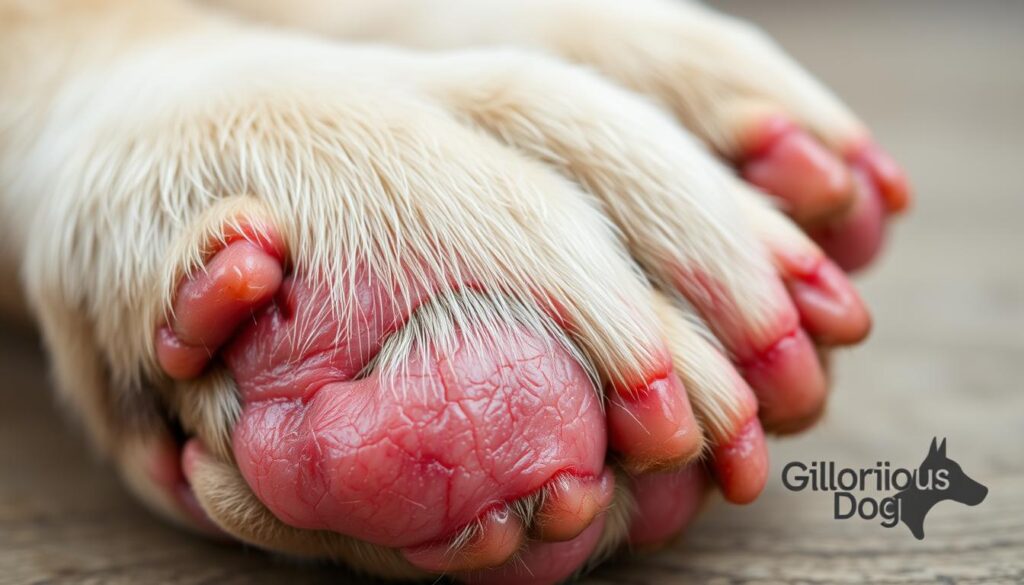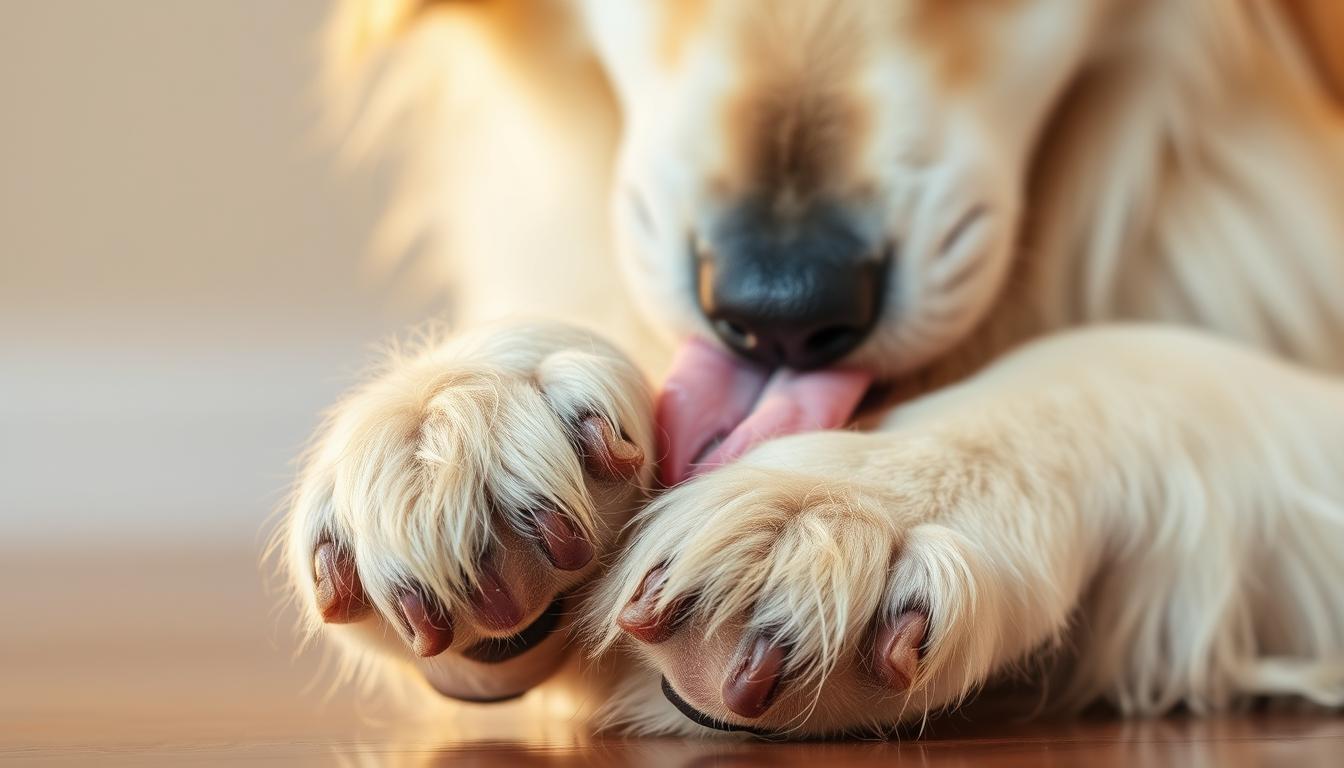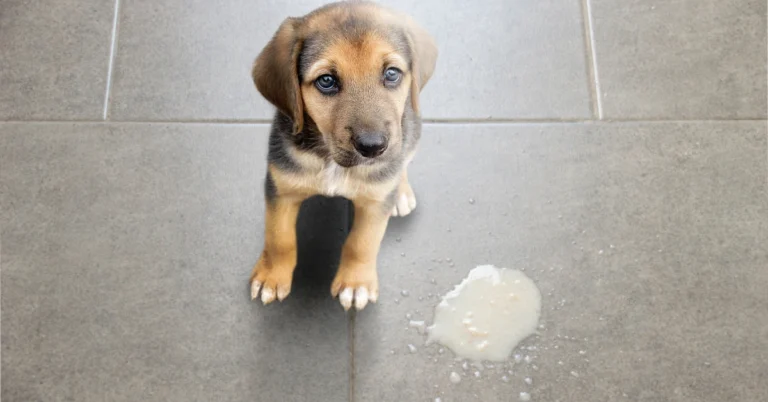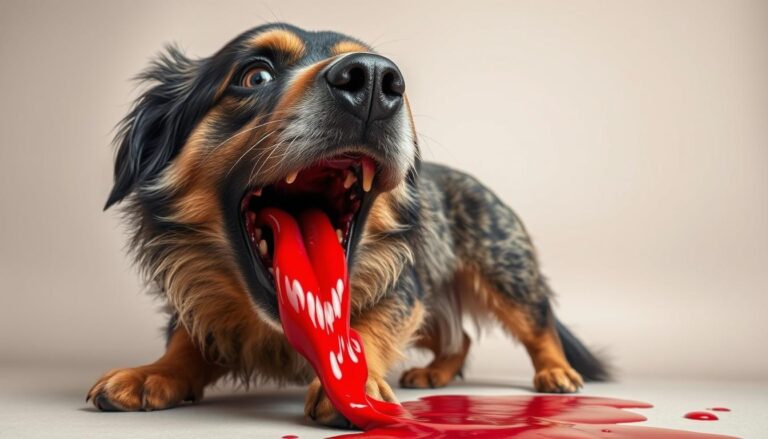Why Do Dogs Lick Their Paws? Shocking Reasons Every Owner Should Know
Max, a playful Golden Retriever, suddenly couldn’t stop licking his paws. His owner, Sarah, noticed red patches between his toes. A quick vet visit revealed allergies—just one of many reasons pets engage in this behavior.
Paw licking is common, but excessive cases signal deeper issues. Medical, environmental, or behavioral factors often trigger it. Allergies, injuries, or anxiety may be the cause. Around 60% of cases link to these problems.
Occasional grooming is normal. Yet, persistent licking demands attention. Early action prevents infections and discomfort. This article explores the root causes and solutions for concerned pet owners wondering, “Why Do Dogs Lick Their Paws?”
Table of Contents
Normal Grooming vs. Excessive Paw Licking
After a muddy park adventure, Bella’s quick paw-cleaning routine seemed harmless—until it became constant. Pets often groom to remove dirt or food residue. Yet, when this habit escalates, it may hint at hidden problems.
When Licking Is Part of Healthy Hygiene
Occasional lick paws sessions are natural. Dogs tidy up after walks or meals. Brief attention to pads helps clear debris like sand or grass.
Healthy grooming lasts minutes, not hours. Dr. Henao notes,
“Sudden focus on one paw often signals injury.”
Signs Your Dog’s Licking Is a Problem
Excessive paw licking shows physical or emotional distress. Watch for:
- Redness or swelling between toes
- Cracked pads or hair loss
- Limping or sticky discharge
Constant moisture breeds yeast infections. If signs persist, consult a vet to curb irritation before it worsens.
Medical Reasons On Why Do Dogs Lick Their Paws
Rusty, a lively Beagle, began favoring his front paw after a hike, revealing a hidden thorn. Many pets face similar medical issues, from tiny cuts to chronic pain. Identifying the root cause early prevents infections and long-term discomfort.
Injuries and Foreign Objects
Thorns, glass, or ice balls often lodge between pads. Inspect nails and toe webbing for:
- Swelling or redness
- Bleeding or limping
- Foreign debris
Dr. Patel advises,
“25% of cases involve embedded objects—clean wounds promptly to avoid infections.”
Allergies: Environmental and Food Triggers
Paw licking escalates with allergies. Common culprits include:
| Type | Triggers | Signs |
|---|---|---|
| Environmental | Pollen, grass | Darkened paws, redness |
| Food | Chicken, beef | Itchy ears, face |
Hypoallergenic diet trials or medicated shampoos often help.
Parasites: Fleas, Ticks, and Mites
Fleas cause intense itching, especially with allergy dermatitis. Check for:
- Tiny black specks (flea dirt)
- Hair loss near paws
Vets recommend monthly preventatives and safe tick removal tools.
Pain from Arthritis or Joint Issues
Older pets may lick joints due to arthritis. Watch for:
- Stiffness after rest
- Reluctance to climb stairs
Prescriptions like Librela™ or Galliprant® can ease pain and reduce licking.
Skin Conditions and Infections
Luna, a curious Labrador, developed inflamed paws after rolling in freshly treated grass. Persistent moisture and irritants can damage the skin, leading to redness or infections. Early detection prevents minor issues from escalating.

Dermatitis and Bacterial Risks
Contact with lawn chemicals or harsh cleaners often triggers dermatitis. Symptoms include:
- Redness between toes
- Scabs or hair loss
- Pus-filled bumps (bacterial infections)
Dr. Kim notes,
“Untreated allergies frequently lead to secondary bacterial issues—prompt care stops the cycle.”
Medicated shampoos or antiseptic sprays may help.
Yeast Overgrowth from Moisture
Constant licking creates a damp environment where yeast thrives. Watch for:
- Brownish discharge
- A musty smell
- Darkened skin
Vets often prescribe antifungal creams. Drying wipes between walks reduce moisture buildup.
Secondary infections worsen itching, creating a vicious cycle. Regular paw checks and vet visits curb irritation before it becomes a severe problem.
Behavioral Causes of Paw Licking
Cooper, a high-energy Border Collie, started obsessively chewing his feet during fireworks. Like many pets, his anxiety manifested as compulsive grooming. Emotional triggers often drive this behavior, requiring patience and targeted solutions.

Stress and Anxiety Triggers
Loud noises or separation can spike anxiety. Common scenarios include:
- Thunderstorms or fireworks
- Long hours alone (separation anxiety)
- New environments or routines
Dr. Rivera notes,
“Pets may focus on paws to self-soothe—redirecting their energy is key.”
Boredom and Lack of Stimulation
Under-stimulated pets often lick from boredom. Solutions include:
| Issue | Solution | Effectiveness |
|---|---|---|
| Boredom | Puzzle toys, daily walks | High |
| Anxiety | Pet Releaf CBD Calming Chews | Moderate-High |
For severe cases, consult a veterinary behaviorist. Products like bitter sprays deter licking, while relief chews ease stress.
Consistency helps modify behavior. A mix of exercise, mental stimulation, and vet-approved products supports long-term improvement.
Conclusion: When to Consult a Veterinarian
Sophie, a gentle Shih Tzu, developed swollen toes after a routine grooming visit. Her owner noticed limping and rushed her to the vet. Immediate care prevented a worsening problem.
Urgent signs demand treatment: bleeding, pus, or whimpering. Swollen or cracked paws may indicate infections. Delayed advice risks chronic discomfort.
For maintenance, try Pet Releaf’s Skin & Paw Balm. Prioritize pet health—act fast when issues arise.
Is occasional paw licking normal for dogs?
Yes, mild grooming is natural. Pets clean dirt or debris from their pads, similar to how humans wash hands. Excessive or obsessive behavior signals an issue.
What allergies cause frequent paw licking?
Environmental irritants like pollen, mold, or chemicals trigger reactions. Food sensitivities, especially to proteins or grains, also lead to inflamed skin and constant chewing.
Can fleas or parasites make a dog lick its paws?
Absolutely. Fleas, ticks, and mites cause intense itching. Pets often focus on their feet for relief, leading to redness or infections if untreated.
How does arthritis relate to paw licking?
Joint pain may cause pets to soothe discomfort by chewing or licking. Older dogs with arthritis frequently target their paws due to stiffness or inflammation.
What skin infections result from excessive licking?
Bacterial or yeast infections thrive in moist areas. Persistent moisture from saliva breaks down skin barriers, creating hotspots or dermatitis.
Can anxiety lead to paw licking?
Stress and boredom are common behavioral triggers. Pets may develop compulsive habits, like over-grooming, as a coping mechanism for loneliness or changes in routine.
When should a vet examine paw licking?
Seek professional advice if licking causes hair loss, swelling, or open sores. Persistent issues may require allergy tests, medication, or dietary adjustments.



